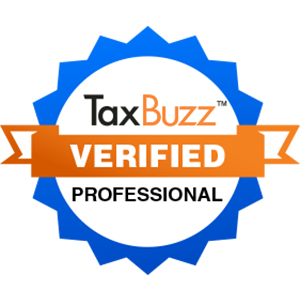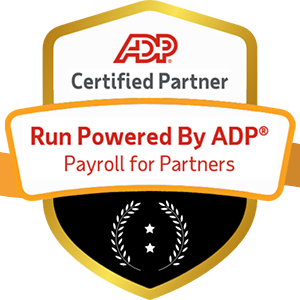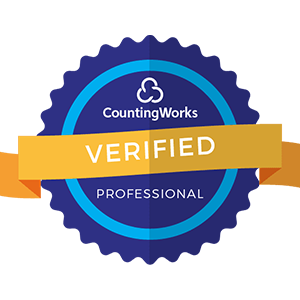
The Learning Revolution: Organizations implementing flow-of-work learning see 58% faster skill acquisition, 34% higher employee engagement, and 27% improvement in performance metrics. Yet only 31% of companies have successfully integrated learning into daily workflows. Companies with strong learning-in-the-flow cultures adapt to change 5x faster and report 92% higher innovation rates than traditional training-focused organizations.
The industrial-era model of separated work and learning has become fundamentally incompatible with modern business realities. Traditional approaches that isolate learning into discrete training events create artificial barriers between knowledge acquisition and practical application, resulting in low retention rates and limited behavioral change.
Contemporary work environments demand adaptive expertise that evolves continuously rather than static knowledge acquired through periodic formal training. The half-life of skills continues shrinking across industries, with technical competencies becoming outdated within 2-3 years and soft skills requiring constant refinement to remain relevant.
Research by the Corporate Executive Board reveals that employees forget 90% of what they learn in formal training within one week, while knowledge acquired through social learning and real-world application demonstrates significantly higher retention and application rates.
The shift toward learning in the flow of work represents more than operational efficiency—it reflects fundamental changes in how humans acquire and apply knowledge in complex, dynamic environments where contextual understanding matters more than memorized procedures.

Understanding why flow-of-work learning proves more effective requires examining the cognitive and social mechanisms that drive knowledge acquisition and skill development in professional contexts.
Bandura's social learning theory explains why peer observation and modeling create more effective learning experiences than isolated instruction. When employees observe colleagues successfully applying new skills in real work situations, they gain both technical knowledge and contextual understanding about when and how to apply those skills.
Collaborative learning environments leverage collective intelligence that exceeds individual learning capacity. Research demonstrates that teams engaged in collaborative learning solve complex problems 40% faster than individuals working independently.
Communities of practice provide psychological safety and social support that encourage experimentation and risk-taking necessary for meaningful skill development. These informal networks create learning opportunities that formal training structures cannot replicate.
Situated learning theory demonstrates that knowledge acquired in authentic work contexts transfers more effectively to actual job performance than abstract knowledge gained in artificial training environments.
Just-in-time learning delivery aligns with cognitive science principles about optimal timing for knowledge acquisition. When learning occurs immediately before or during task performance, retention rates increase dramatically while cognitive load decreases.
Microlearning approaches recognize human attention and memory limitations by delivering focused content in digestible segments that can be immediately applied and reinforced through practice.
Modern learning technologies serve as crucial infrastructure for flow-of-work learning, but success depends on strategic implementation that enhances rather than disrupts natural work patterns.
Artificial intelligence applications in workplace learning include personalized content recommendation, adaptive learning paths, and intelligent tutoring systems that adjust to individual learning patterns and performance indicators.
Natural language processing enables sophisticated search and knowledge discovery capabilities that help employees find relevant information quickly without interrupting work flow or requiring extensive navigation through complex systems.
Machine learning algorithms analyze user behavior and performance data to identify optimal learning interventions while predicting skill gaps before they affect performance or business outcomes.
Digital workflow integration embeds learning resources directly into business applications where employees actually perform their work, eliminating friction between learning and application.
Augmented reality and virtual reality technologies provide immersive learning experiences that simulate real work conditions while enabling safe practice of high-stakes skills.
Mobile learning platforms recognize that modern work often occurs outside traditional office environments, providing access to learning resources regardless of location or device preferences.
Collaboration platforms facilitate knowledge sharing and peer learning through discussion forums, expert networks, and real-time communication channels that connect employees across organizational boundaries.
Social knowledge bases capture and organize tacit knowledge from experienced employees while making it searchable and accessible to others facing similar challenges.
Mentoring and coaching platforms scale traditional one-on-one relationships by matching employees with appropriate mentors while providing structured frameworks for developmental conversations.
Successful flow-of-work learning requires systematic transformation that addresses organizational culture, technology infrastructure, and management practices simultaneously.
Business impact analysis identifies specific performance gaps and business challenges that learning interventions can address, ensuring investment focuses on areas with greatest potential return.
Learner persona development creates detailed profiles of different employee segments including their work patterns, technology preferences, learning styles, and contextual constraints that affect learning engagement.
Capability mapping evaluates existing organizational learning assets including formal programs, informal networks, and technology platforms to identify gaps and optimization opportunities.
Stakeholder engagement ensures that learning initiatives align with business strategy while gaining support from leadership, managers, and employees who must participate for success.
Learning mindset development requires shifting organizational attitudes from viewing learning as separate from work to recognizing it as integral to high performance and innovation.
Manager enablement proves crucial because direct supervisors significantly influence employee learning behavior through modeling, encouragement, and resource provision.
Recognition and reward system alignment ensures that learning behaviors and knowledge sharing receive appropriate acknowledgment and incentives that reinforce desired cultural changes.
Psychological safety creation enables employees to admit knowledge gaps, ask questions, and experiment with new approaches without fear of negative consequences that inhibit learning.
Platform consolidation reduces complexity by integrating learning capabilities into existing business systems rather than requiring separate login credentials and navigation patterns.
User experience optimization ensures that learning interfaces provide intuitive, friction-free access to resources while maintaining consistency with other workplace technologies.
Content curation strategies balance comprehensive resource availability with focused relevance to prevent information overload while ensuring quality and accuracy of learning materials.
Analytics and measurement systems track both learning engagement and business impact to demonstrate value while identifying opportunities for improvement and optimization.

Effective flow-of-work learning requires thoughtful approaches to content creation, organization, and delivery that prioritize actionability and relevance over comprehensiveness.
Bite-sized learning modules deliver focused knowledge that can be consumed and applied immediately without disrupting work flow or overwhelming cognitive capacity.
Performance checklists and job aids provide quick reference materials that support skill application during actual work performance rather than requiring prior memorization.
Video-based learning leverages visual and auditory learning preferences while demonstrating procedures and techniques that may be difficult to convey through text-based materials.
Interactive simulations allow employees to practice skills and decision-making in realistic but risk-free environments that build confidence before real-world application.
Employee-created content captures practical insights and real-world applications that professional instructional designers might miss while building ownership and engagement among contributors.
Crowdsourced knowledge bases harness collective expertise while creating self-maintaining resources that evolve continuously based on user contributions and feedback.
Story-telling approaches make learning content more memorable and relatable by connecting abstract concepts to real experiences and outcomes that resonate with learners.
Best practice sharing platforms enable high-performing employees to share their methods and insights with colleagues while building recognition for expertise and contribution.
Editorial review processes ensure accuracy and currency of learning content while maintaining appropriate tone and alignment with organizational values and standards.
Subject matter expert networks provide ongoing validation and updating of technical content while ensuring that learning materials reflect current best practices and industry standards.
Version control and content lifecycle management prevent outdated information from misleading employees while ensuring that updates reach all relevant stakeholders promptly.
Usage analytics inform content optimization decisions by revealing which resources provide value and which require improvement or retirement.
Flow-of-work learning requires sophisticated measurement approaches that capture both learning engagement and business impact while accounting for the distributed and continuous nature of learning activities.
Engagement tracking measures how employees interact with learning resources including frequency, duration, and completion rates that indicate content effectiveness and user satisfaction.
Application tracking monitors whether employees actually use newly acquired knowledge and skills in their work performance rather than simply consuming learning content.
Collaboration metrics assess the health and effectiveness of social learning networks including knowledge sharing frequency, peer interactions, and community participation.
Skill progression measurement evaluates capability development over time using competency assessments, performance reviews, and objective skill demonstrations.
Performance correlation analysis examines relationships between learning engagement and key performance indicators including productivity, quality, customer satisfaction, and innovation metrics.
Time-to-competency measurement tracks how quickly new employees or those in new roles achieve acceptable performance levels compared to traditional training approaches.
Cost-benefit analysis compares investment in flow-of-work learning infrastructure against savings from improved performance, reduced turnover, and decreased formal training requirements.
Innovation indicators assess whether learning initiatives contribute to new ideas, process improvements, and creative problem-solving that drive business value.
Regular review cycles evaluate learning program effectiveness while identifying opportunities for enhancement based on changing business needs and learner feedback.
A/B testing of different learning approaches enables data-driven optimization decisions while avoiding subjective biases about learning effectiveness.
Benchmarking against industry standards and best practices provides context for performance evaluation while identifying opportunities for competitive advantage.
Feedback loop integration ensures that learning programs adapt continuously based on user experience and business impact rather than operating as static systems.
Organizations implementing flow-of-work learning encounter predictable obstacles that can be addressed through proactive planning and systematic change management.
Content curation strategies help employees focus on most relevant learning opportunities while avoiding overwhelming choice that leads to decision paralysis or superficial engagement.
Personalization algorithms filter learning recommendations based on individual roles, goals, and current capabilities to reduce noise while increasing relevance and actionability.
Learning pathway design provides structured guidance through complex topics while allowing flexibility for individual preferences and circumstances.
Time management integration helps employees balance learning activities with productive work requirements through realistic scheduling and priority-setting frameworks.
Expert review processes ensure accuracy and currency of user-generated content while maintaining appropriate standards for organizational knowledge resources.
Peer rating and feedback systems enable community-based quality control that scales beyond what centralized review processes can achieve while building engagement.
Fact-checking and verification procedures prevent misinformation from spreading through social learning networks while maintaining trust in organizational knowledge systems.
Content lifecycle management removes outdated or inaccurate information while ensuring that updates reach all relevant users promptly and effectively.
Leadership modeling demonstrates commitment to continuous learning while providing visible examples of how learning contributes to business success and career advancement.
Early adopter identification and support creates learning champions who can influence broader organizational adoption through peer networks and informal influence.
Success story communication showcases concrete examples of how flow-of-work learning drives individual and business results while building momentum for broader adoption.
Gradual implementation approaches allow organizations to build capability and confidence systematically rather than attempting comprehensive transformation simultaneously.

The flow-of-work learning landscape continues evolving as new technologies and workplace patterns create additional possibilities for integrated learning experiences.
Adaptive learning systems will become increasingly sophisticated in customizing content delivery, pacing, and methodology based on individual learning patterns and performance outcomes.
Predictive analytics will anticipate learning needs based on business trends, role transitions, and skill evolution patterns while proactively recommending development opportunities.
Natural language interfaces will enable conversational learning experiences that provide immediate answers to work-related questions while capturing and sharing knowledge across organizations.
Virtual and augmented reality applications will provide increasingly realistic practice environments for complex skills while reducing costs and risks associated with real-world training.
Mixed reality integration will overlay digital learning content onto physical work environments while providing contextual guidance and performance support.
Gamification elements will enhance engagement and motivation while providing structured progression frameworks that maintain learning momentum over time.
Cross-organizational learning networks will enable knowledge sharing across industry boundaries while building collaborative relationships that benefit all participants.
AI-powered expert matching will connect employees with appropriate mentors and collaborators regardless of geographic or organizational boundaries.
Blockchain applications may provide secure, verifiable credentials for skills and knowledge acquired through informal learning channels while maintaining privacy and autonomy.
Organizations planning flow-of-work learning initiatives should follow systematic approaches that build capability while demonstrating value through measurable improvements.
Small-scale pilots allow organizations to test approaches and refine strategies before investing in comprehensive transformation while building internal expertise and confidence.
Success criteria definition ensures that pilot programs generate meaningful data about effectiveness while providing clear benchmarks for expansion decisions.
Cross-functional team engagement brings together diverse perspectives and expertise while building organizational capability for managing integrated learning initiatives.
Rapid iteration cycles enable quick learning and adjustment while maintaining momentum and stakeholder engagement throughout pilot periods.
Phased rollout approaches manage complexity while allowing organizations to apply lessons learned from early implementations to broader deployment efforts.
Change management coordination ensures that cultural transformation keeps pace with technology implementation while addressing resistance and building adoption.
Resource allocation planning provides adequate support for successful expansion while balancing investment across technology, content, and human capital requirements.
Performance monitoring systems track progress across multiple metrics while identifying areas requiring additional attention or resource allocation.
Learning in the flow of work represents a fundamental evolution in how organizations develop human capabilities while adapting to rapidly changing business environments. This approach transcends traditional training paradigms by recognizing that the most effective learning happens through social interaction, authentic practice, and immediate application in real work contexts.
Success requires more than implementing new technologies or restructuring training programs—it demands comprehensive transformation of organizational culture, management practices, and employee expectations about continuous development. Organizations that master this transformation gain competitive advantages through enhanced adaptability, innovation, and performance that compound over time.
The investment required for effective flow-of-work learning—including technology infrastructure, content development, and cultural change management—delivers returns through improved employee engagement, faster skill development, and enhanced organizational agility that enables success in dynamic market conditions.
The future belongs to organizations that recognize learning as inseparable from work rather than an additional burden or separate activity. By creating environments where knowledge sharing, experimentation, and continuous improvement become natural parts of daily work experience, companies position themselves advantageously for sustained success regardless of changing business conditions.
The choice facing organizational leaders is not whether to embrace flow-of-work learning, but how quickly and effectively they can build the capabilities, culture, and infrastructure necessary to make continuous learning a competitive advantage. Those who act decisively will find themselves with workforces that adapt faster, perform better, and innovate more consistently than competitors relying on traditional training approaches that cannot keep pace with modern business demands.


